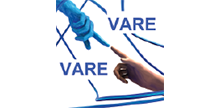Augmented reality: modernizing rural education in India
- abcDepartment of Computer Science and Engineering PESIT Bangalore South Campus Bang
Cite as
N. Sawlani, P. Sangamesh, B.J. Sandesh (2018). Augmented reality: modernizing rural education in India. Proceedings of the 4th International Conference of The Virtual And Augmented Reality In Education (VARE 2018), pp. 11-17. DOI: https://doi.org/10.46354/i3m.2018.vare.002
Abstract
The rapid evolution of technology has changed the face of education, especially when technology was combined with adequate pedagogical foundations. In this paper we are trying to answer the following question: is Augmented Reality an enhancer for Rural Education in India? For this purpose, we define augmented reality and present a state of the art mapped mainly by studies that focus AR in educational contexts. We also describe our research, including methodological aspects in data collection and the creation of 3D contents in AR for the purpose of education in high school level. This combination has created new opportunities for improving the quality of teaching and learning experiences. Until recently, Augmented Reality (AR) is one of the latest technologies that offer a new way to educate. Due to the rising popularity of mobile devices globally, the widespread use of AR on mobile devices such as smart phones and tablets has become a growing phenomenon. Therefore, this paper reviews several literatures concerning the information about mobile augmented reality and exemplify the potentials
for education.
References
- Dr.Cardoso Teresa, Dr. Mateus Artur, 2015, Augmented Reality: an Enhancer for Higher Education Students in Math’s learning? ,6th International Conference on Software Development and Technologies for Enhancing Accessibility and Fighting Info-exclusion(2015) , 332-333.
- National Institution for Transforming India), 2011),Government of India(census of India http://niti.gov.in/content/population-number-malefemale-rural-urban, [July , 2018].
- Akçayır Murat, Akçayır Gokçe , 2016 , Advantages and challenges associated with augmented reality for education: A systematic review of the literature , Educational Research Review(2017) , 1-3.
- Kaur Ramandeep , 2013 , Rural education in India, maps Of India https://www.mapsofindia.com/myindia/education/india-needs-education-especially-ruraleducation, July 2018.
- Amin Dhiraj , Govilkar Sharvar , 2015, Comparative Study of Augmented Reality Sdk’s , International Journal on Computational Sciences & Applications
(IJCSA) Vol.5, No.1,February 2015. - Kumar Satish , 2015, How does an augmented reality applicationwork?, Quora, https://www.quora.com/Howdoes-an-augmented-reality-application-work,April 2018.
- Traveldudes , 2010 , India -A country with over 22languages!,Traveldudes,https://www.traveldudes.org/tra
vel-tips/india-country-over-22-languages/9384,may 2018. - Zhu, E., Hadadgar, A., Masiello, I. & Zary, N. 2014, "Augmented reality in healthcare education: An
integrative review", PeerJ, vol. 2014, no. 1. - Jongbae kim and heesung jun 2008 ,Vision-based location positioning using augmented reality for indoor navigation, IEEE Transactions on Consumer Electronics ( Volume: 54, Issue: 3, August 2008
- Nincareana Danakorn , Ali Bilal , Dayana Abdul Halima, 2013,Mobile Augmented Reality: the potential
for education,13th International Educational Technology Conference(2013), 659-660. - Hwang, G.-J., Tsai, C.-C., Chu, H.-C., Kinshuk, K., & Chen, C.-Y. (2012). A context-aware ubiquitous
learning approach to conducting scientific inquiry activities in a science park.Australasian Journal of
Educational Technology, 28(5), 931e947. - Drysdale, J. S., Graham, C. R., Spring, K. J., & Halverson, L. R. (2013). An analysis of research trends
in dissertations and theses studying blended learning. The Internet and Higher Education, 17, 90e100. - Kucuk, S., Aydemir, M., Yildirim, G., Arpacik, O., & Goktas, Y. (2013). Educational technology research
trends in Turkey from 1990 to 2011. Computers & Education, 68, 42e50 - Kucuk, S., Aydemir, M., Yildirim, G., Arpacik, O., &Goktas, Y. (2013). Educational technology research
trends in Turkey from 1990 to 2011. Computers & Education, 68, 42e50 - Longo, F., Nicoletti, L. & Padovano, A. 2017, "Smartoperators in industry 4.0: A human-centered approach
to enhance operators’ capabilities and competencies within the new smart factory context”, Computers and
Industrial Engineering, vol. 113, pp. 144-159. Proceedings
